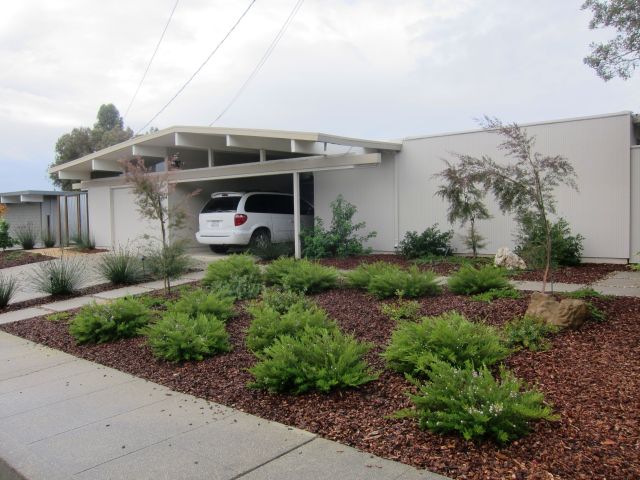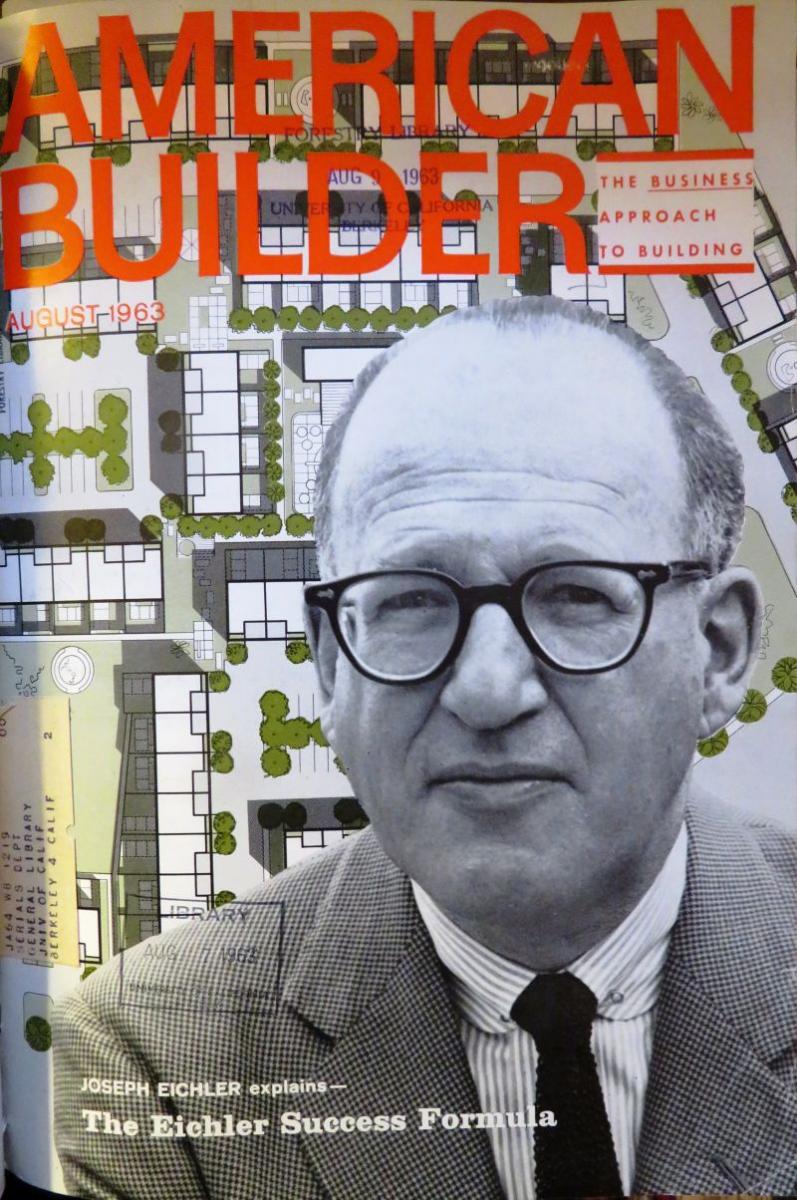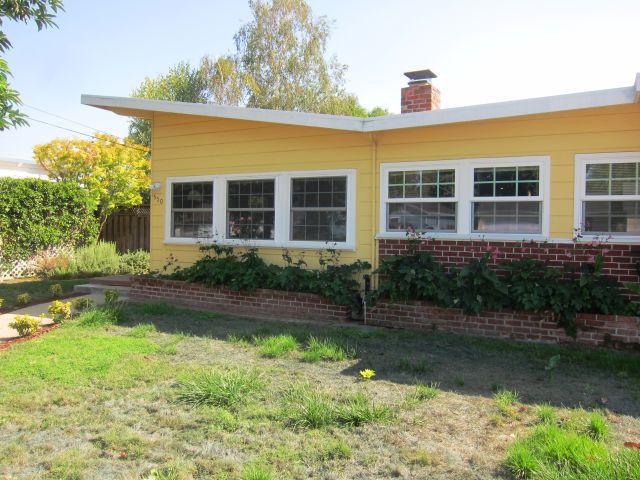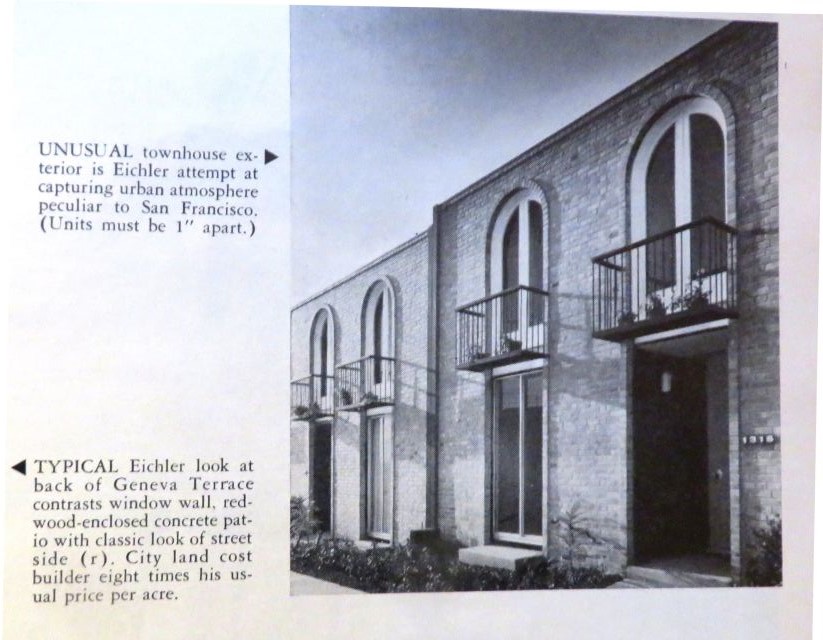
Joe Reveals ‘The Eichler Success Formula’
 |
|
|
Joe Eichler never tweeted. He didn’t give many interviews to the press. It’s been said he once was featured on a talk show on KQED TV, but that show has yet to surface.
So when we do get a chance to hear from Eichler in his own words it’s worth listening. In August 1963, at the height of Eichler Homes’ success, before the company faced bankruptcy and ultimate collapse, before Joe returned to homebuilding with a much smaller firm, he spoke to American Builder magazine to explain what the magazine called, on its cover and with a portrait of Joe filling the page:
“The Eichler Success Formula.”
The six page "exclusive interview with Joseph Eichler" is enlightening. The article by the magazine’s West Coast editor, Bill Rodd, is done in question-and-answer form.
The lead quote, which is provided as the main ingredient in the success formula, is “I try everything. I’m never satisfied.”
 |
|
|
You can see this, of course, in the many hundreds of floor plans, facades, and rooflines Joe produced throughout his approximately 25-year homebuilding career. Not to mention the variety in his site plans.
You see it as well in the variety of projects he took on – not just the single-family housing tracts for which he is best known, but townhouse communities, condos, upscale urban high rises, and working-class urban high rises, even custom homes.
What is revealing about this interview is how committed Eichler was in 1963 to branching out beyond his single-family homes.
Before going to discuss the three high rise residential projects he was currently building in San Francisco – “a 15-story building at Laguna and O’Farrell; a 29-story building at 999 Green Street; and a third project at Turk and Eddy Streets consisting of two 13-story buildings” – Joe answered “yes” when Rodd asked:
“Do you mean that you see the end of the road for your own single-family housing tracts?”
Due to increased land costs, Joe said, “We have reached the point where the creation of single-family houses at a price that people can afford is becoming increasingly difficult and may soon become impossible.
“The situation obviously calls for a more intensive use of land, and we are more and more turning our attention in that direction.”
 |
|
|
But of course Eichler continued to build single-family homes throughout his career. And after he reorganized following the collapse of Eichler Homes, Inc., single family homes were almost the only thing he built.
And in this article, he says he will be building 75 homes during the year.
Indeed, what Joe says about the history of his single-family home designs reveals much.
Eichler explained his success formula so:
“I operate on the theory of innovation. I develop what I believe to be good, and then I offer it to my customers. Many builders say ‘give the people what they want,’ but how can people ‘want’ innovations they have never seen or heard of?”
“I don’t want to be immodest,” Joe continues, “but I believe we were the first volume builder in California to use many of the things that are now commonplace: sliding glass doors, built-in range and oven, metal cabinets, metal sash, radiant heat in floors.”
 |
|
|
He discusses his first venture in homebuilding, the formation of Sunnyvale Building Co. in 1947 “to prefabricate houses” sold to owners who would erect them on their own lots. Joe found this “unsatisfactory.” He says, so he bought “45 acres of ground to build the same types of houses for sale.”
“A little later I began to build conventional houses designed by a draftsman I had hired, but these didn’t satisfy me either.”
Some of these homes, many of which are more modern than “conventional,” can be seen in such early Sunnyvale tracts as Sunnymount Gardens and Sunnyvale Manor.
Then, Joe says, he hired Anshen an Allen and he was on his way to creating…
“What do you call your homes,” Rodd asks. “Contemporary or modern or what?”
“I call them Eichler homes... There’s nothing else like them.”
In future articles we will delve further into this revealing article from the August 1963 American Builder magazine.
- ‹ previous
- 362 of 677
- next ›



